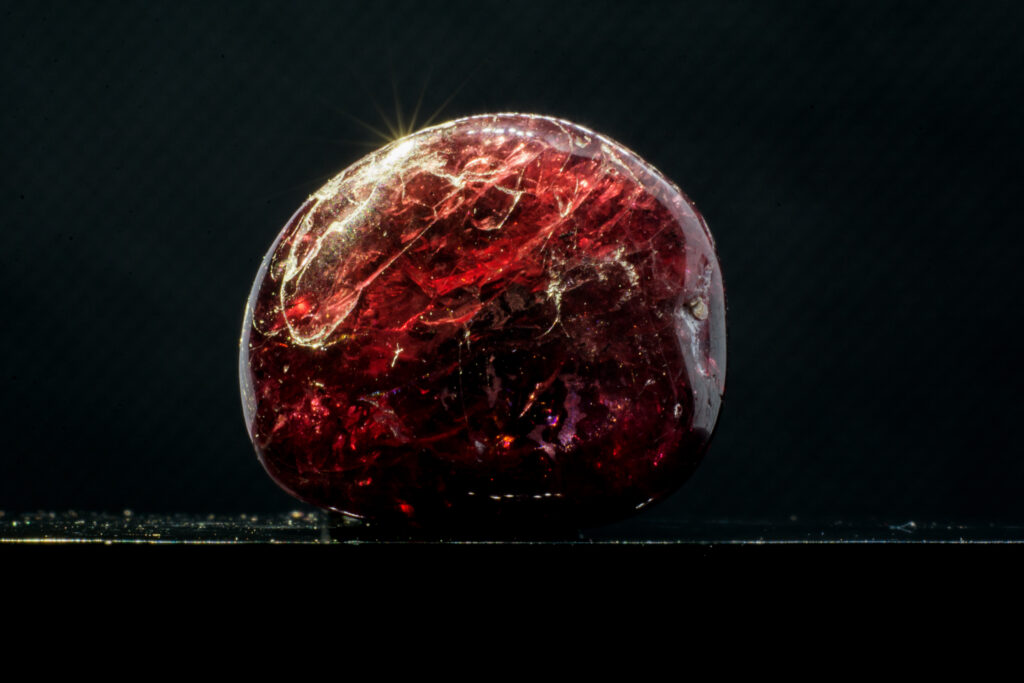Sapphires are most commonly known for their beautiful blue hues, but can you get a red sapphire?
Sapphires occur in a wide range of colors, from blue to yellow, and from pink to orange, but a red sapphire is technically a ruby. Although they’re made up of the same mineral, which is corundum, when that corundum takes on a red coloration, it becomes known as a ruby.

Read on to learn more about sapphires, rubies, and the differences between the two.
Remarkable Red, Or Beautiful Blue?
It can be argued that there are four ‘big’ gemstones out there that dominate the jewelry world. They consist of the traditional and timeless diamond, and the colorful three: emeralds, rubies, and sapphires.
These gemstones form over the course of millions of years, hardening, growing, and evolving as time goes on. They’re composed of different elements, each boasting unique attributes such as toughness, brilliance, and remarkable coloration.
For a diamond, the base element is carbon, and literally nothing else. However, where sapphires and rubies are concerned, the base element is corundum, an extremely hard mineral that easily changes color when other elements are introduced to it as it forms.
Finally, there’s emerald – a gemstone in a league of its own, which is made from beryl, a much less dense mineral that can be riddled with ‘inclusions’. These inclusions are the unique, but sometimes damaging fractures, fissures, and air bubbles that occur within the gemstone.
When pure, these minerals don’t amount to much – especially corundum, which is little more than a tough mineral before other elements are introduced into the mix. For example, when chromium or vanadium mixes with beryl as it forms, a dark green emerald will be produced.
If you take corundum and introduce the same element, chromium, it will produce a red gemstone – a ruby. However, if you take the same mineral and introduce iron and titanium, you’ll end up with a deep, blue sapphire.
Although, it doesn’t end there – particularly for sapphires, as they can come in a wide range of colors based on the elements that are introduced. If traces of copper, magnesium, or vanadium seep into the corundum as it forms, you can end up with a pink, yellow, or even orange sapphire.
But you’ll never have a red sapphire, of course – that will always be classed as a ruby.
Precious Gemstones Through The Ages
For thousands of years, humans have almost worshipped precious gemstones, believing them to be magical, protective, or powerful. There have been many cultures that have seen the value in fine jewels, with many adorning clothing, weaponry, or accessories with diamonds, rubies, sapphires, and emeralds.
In some cases, particular gemstones have been thought of as negative things, inviting bad luck and misfortune into the life of the owner. Throughout history, sapphires have had a rocky relationship with superstition, with some believing that a sapphire can bring chaos to a person’s life.
There were many ancient civilizations that believed emeralds were a sure sign of wealth, fertility, and even immortality. Allegedly, the infamous Cleopatra would surround herself with emeralds, often giving them as gifts to ambassadors and dignitaries from other countries.
Similarly, rubies have long been thought of as a symbol of nobility and passion. Once upon a time, rubies were known as the stone of kings, and they were said to offer an aura of protection to the wearer at all times.
Finally, there’s the diamond, arguably the most popular and commonly-used stone among them all. It’s said that diamonds symbolize faithfulness, innocence, love, and purity, hence their use in engagement and wedding jewelry.
Of course, almost all of these beliefs are shrouded in myth and superstition, and today, a gemstone is appreciated for its beauty and value. While there are still many people who put their faith in tradition, most will wear a gemstone simply because they love how it looks.
Ultimately, there are few things on this planet that are worth more than gemstones, particularly on a gram-for-gram scale. These top four gemstones are the most popular but are they necessarily the most valuable?
In a way, yes – the red diamond is considered the most expensive gemstone on Earth, boasting a price tag of around $1,000,000 per carat. Reportedly, there are fewer than thirty red diamonds known to exist in the world right now, which also makes them one of the rarest gemstone variants.
Remember, while a red diamond is still a diamond, a red sapphire is a ruby!
